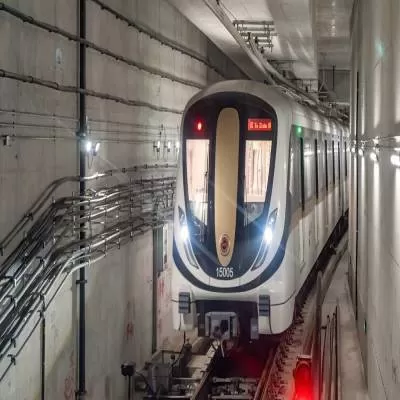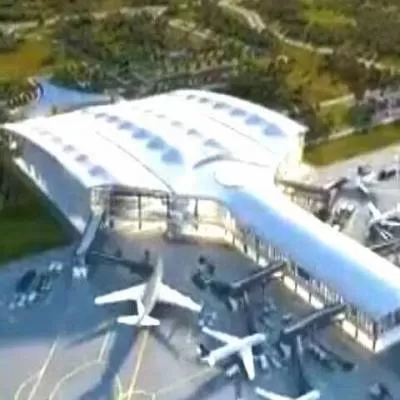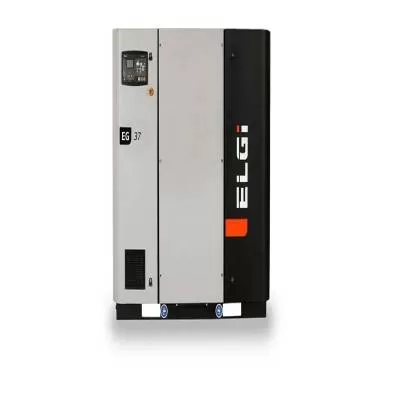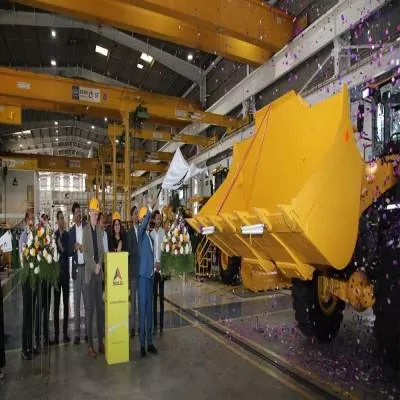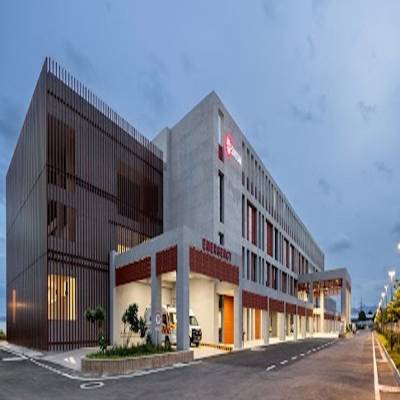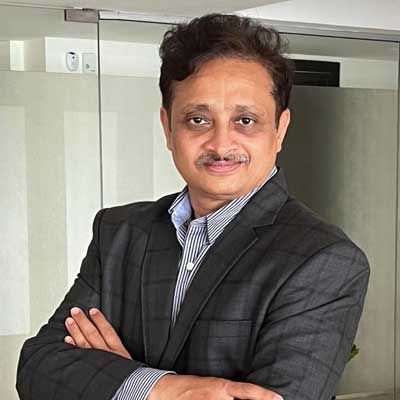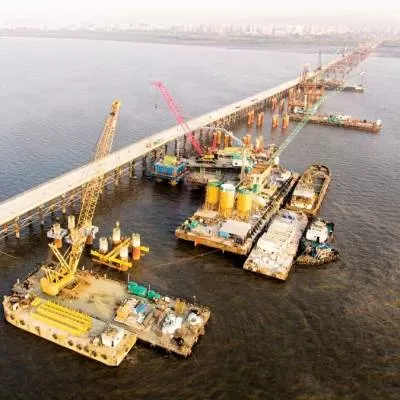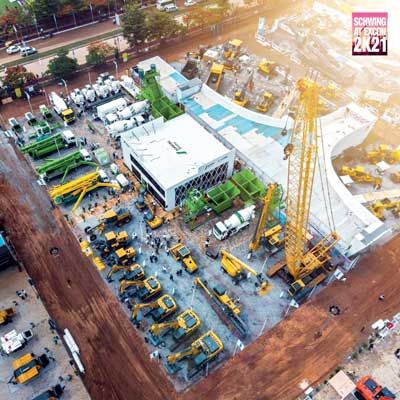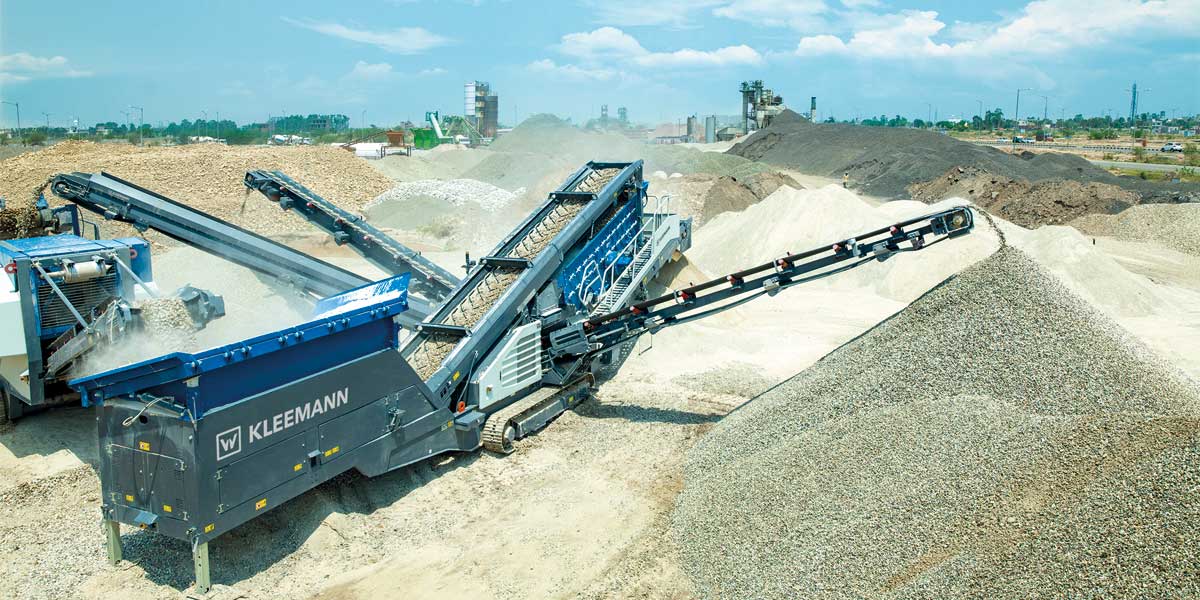
Crushing on through the Pandemic
Read full article
CW Gold Benefits
- Weekly Industry Updates
- Industry Feature Stories
- Premium Newsletter Access
- Building Material Prices (weekly) + trends/analysis
- Best Stories from our sister publications - Indian Cement Review, Equipment India, Infrastructure Today
- Sector focused Research Reports
- Sector Wise Updates (infrastructure, cement, equipment & construction) + trend analysis
- Exclusive text & video interviews
- Digital Delivery
- Financial Data for publically listed companies + Analysis
- Preconceptual Projects in the pipeline PAN India
- Pandemic
- Crushing
- Mining
- road construction
- building construction
- Prasanna Vadana
- PSI Technologies Inc
- Crusher-related equipment
- pre-COVID
- NHAI
- NHIDCL
- Puzzolana
- Wirtgen India
- Construction Equipment Division
- Terex Powerscreen Business
- Viraj Parthi
- Road construction
- Developments
- semi-mobile or tyre-mounted
- GSB
- WMM
- vertical shaft impact
- Dual-power electric versions
- Terex Powerscreen
- plants
- Kleemann crushing and screening plant systems
- AMC
- Tackling illegal crushing
- Terex Finlay
- Vadiraj Pappu
- Viraj Parthi,
Photo courtesy: Wirtgen IndiaMining, road construction and building construction are the mainstays of the crushing and screens segment. How has the segment fared in these challenging times? While mining and road construction were allowed to function right from the beginning of the lockdown and saw budgetary allocations from governments, both segments grew at a slower pace than previous years, observes Prasanna Vadana MN, Founder, PSI Technologies Inc. “We have seen no noticeable equipment sales or finance. Crusher-related equipment is also dependent on housing and building construction; this sector has not been encouraging.” Demand from the road construction industry isn’t at the same levels as pre-COVID times but is still fairly good because the Ministry of Road Transport and Highways (MoRTH), National Highways Authority of India (NHAI) and National Highways and Industrial Development Corporation (NHIDCL) have ensured continuity of road construction as well as tendering, according to Ramana Kumar, AGM-Application, Puzzolana Machinery Fabricators (Hyderabad) LLP. “As building construction is picking up slowly, demand for sand and aggregates is pushing commercial quarrying activity.” “We have seen growth in demand for crushing and screening equipment from the mining industry as most iron ore and coal mining leases have been renewed and the new mine owners have started operations,” says Ramesh Palagiri, Managing Director and CEO, Wirtgen India. “Migrant labour issues and uncertainty, both outcomes of the pandemic, have caused customers to put new procurement plans on hold; this, in turn, has impacted new plant sales.” “We have seen a slump in demand for crushers for road projects and infrastructure,” says Vadiraj Pappu, Business Head, Mining & Construction Equipment Division, Voltas (A Tata Enterprise), Terex Powerscreen Business. “Nevertheless, demand for crushers and screens for the iron-ore sector has increased.” Demand for crushers is intact but the pandemic has affected demand and supply timelines, observes Viraj Parthi, Country Manager, Terex Finlay. “Road construction has been more affected as it is more labour-intensive and most sites have temporary infrastructure with minimal healthcare support.” Developments in 2020 The year 2020 saw the entry of new players in the road construction industry, according to Ramana. “Owing to the pandemic slowing down the real-estate market, several builders started to lower their exposure in that segment and instead started to focus on road construction where investments continue to be made.” As the dynamics of road construction differ from building construction, he believes these new players may face different challenges to successfully execute such projects. Plant preferences About 40-45 per cent of crushers in use are stationery or static or skid-mounted, 35-40 per cent are semi-mobile or tyre-mounted, and about 15-20 per cent are track mobile, estimates Pappu. “Demand varies by application and the span of the project in progress.” While the quarrying market mostly comprises stationary or custom-built plants (commercial aggregate market), contractors prefer wheeled units for faster deployment, and depending on the site conditions like hilly terrain or for faster deployment they may opt for track units as well to produce granular sub base (GSB) and wet mix macadam (WMM), shares Palagiri. “Higher capacity tracked inclined screens (classifiers) are the most in-demand products for iron-ore mining,” he continues. “Demand for horizontal screens or scalpers depends on the mined minerals and their properties. The mining industry predominantly uses custom-built stationary crushers suited to the mine plan of the quarry.” “Demand for track-mounted crushers and screens is increasing rapidly but the market share of static plants still remains higher because of their low capital cost and ease of feeding by dump trucks,” says Parthi. “Demand for heavy-duty screens is growing rapidly on account of mining and recycling or waste handling applications. Another growing segment with a lot of scope for growth is sand-washing.” Jaw crushers, cone crushers and vertical shaft impactors continue to be in demand for construction as they are standard, well-proven machines while in mining, jaw and cone crushers continue to be popular but vertical shaft impact (VSI) crushers are not used as cubically shaped products aren’t needed, according to Ramana. “However, for very large capacity plants, gyratory crushers in the primary stage continue to be the most economical solution, followed by cone crushers in the secondary and tertiary stages. Inclined vibrating screens continue to be the most popular and proven screens in the road construction industry. Notwithstanding their performance, improvements in these machines and the structures around them are a continuous process.” Preferred features Dual-power electric versions of track mobile crushers and screens are attracting attention for their ability to drastically cut power and maintenance costs, says Pappu. “Terex Powerscreen will be introducing dual-power plants by October 2021.” Buyers are more interested in plants that are quick to set up with low operating cost, shares Parthi. “Plant reliability and availability have also emerged as desirable features. Project timelines are very stiff and contractors are targeting the bonus they receive if the project is completed before the deadline. This is impelling customers to opt for more reliable plants with after-market support.” Demand for telematics is growing as crushing plant owners want to monitor productivity remotely and a better, more reliable product at a lower price, observes Ramana. Today’s buyer preference is towards continuous monitoring, machine availability and better return on investment, according to Palagiri. Kleemann crushing and screening plant systems are designed down to the finest detail with the overall process in mind. Technologically, these machines offer superior ‘Spective controls’ and plant interlinkages through a continuous feed system that can maximise the availability of the machines, Wirtgen telematics as well as core design elements enabling flexible operations and optimum production without compromising on the quality of aggregates crushed. All Kleemann machines are designed to facilitate proper material flow to optimise production, generate better quality aggregates, reduce the consumption of energy and improve the cost per tonne. Plant rentals The hiring segment is under stress, according to Pappu. “Principal contractors have been deferring payments. Migrant labour issues emerged again with the second wave.” “Rental customers mostly ask for track units, unless they get huge aggregate crushing orders in which case they prefer wheeler units,” observes Palagiri. “Incidentally, the rental market is very small and handled by very few contractors who depend on the availability of boulders and this, too, has slowed owing to COVID-19.” Ramana points out how some building construction companies have entered the road construction sector. He feels their engagement could spur an uptick in the crushing and screens rental sphere as they could be averse to investing in new crushing plants before establishing themselves in the segment. Future expectations Pappu sees the ongoing slowdown as a short-term situation wherein Q1 will post slightly lower sales and production figures. Hits to vendors and the supply chain have diluted equipment manufacturing. Parthi is optimistic about demand bouncing back, especially as the Central Government has awarded several projects during Q1 of 2021 and many more are in the pipeline. Vadana expects an increase in demand for VSI crushers as a result of higher demand for manufactured sands. Accordingly, in future, screening, washing and dewatering screens will see higher demand. Growth pathways In the Indian mining sector, adopting in-pit crushing would enhance the sales of track-mounted crushing units and thereby reduce the haulage charges to the customer, Palagiri points out. Reducing uncertainties and illegal competition would increase the scope for higher investments and financial innovations that would unleash the potential of the mining and construction industry, the mother of all industries and prime mover of economies, believes Vadana. “Investments should involve a proper process design, the selection of right-sized, reliable equipment and an optimal plant layout, all backed by a single supplier or agency that would also include AMCs (annual maintenance contracts) with uptime guarantees. Such investments would ensure guaranteed costs per tonne and continuous outputs. Once the capital and production costs are fixed, pricing will be easy and operating profits can be clearly visualised.” Isn’t that what every plant owner is looking for? Tackling illegal crushing Identifying and digitally mapping existing and potential quarrying sites would help check illegal quarrying as would monitoring by regular physical inspections as well as satellite imagery, suggests Ramana Kumar, AGM-Application, Puzzolana Machinery Fabricators (Hyderabad) LLP. “Regular information sharing between the Centre and states so that both are updated is essential and so is a transparent quarrying policy across states.” One of the main pain points with contractors after being awarded a road construction contract is getting suitable quarries, as delay in securing a quarry invariably delays construction activity, he notes. “To enable smoother and faster road construction activity, in addition to environmental clearance, if the national/state awarding authority earmarked potential quarries in the tender itself, it would eliminate uncertainties on that front.” Technology is the only solution to stop illegal stone crusher operations, according to Viraj Parthi, Country Manager, Terex Finlay. “Also, fewer and easier regulations would help overcome this issue.” “Most states have implemented strict rules and regulations to plug illegal stone quarries such as satellite-controlled GPRS,” observes Vadiraj Pappu, Business Head, Mining & Construction Equipment Division, Voltas (A Tata Enterprise), Terex Powerscreen Business. “Another good step is mandating quarrying to follow the recommendations established for mining for the maintenance of explosives, drilling and blasting, production, worker safety, fire hazards, etc.” What’s new? PSI Technologies Inc has introduced large, twin-shaft linear screens that allow linear motion screening. This was hitherto available for smaller screens built with vibrating motors. Terex Finlay has recently launched hybrid plants offering the flexibility to power the plant either by a mains electric connection or onboard genset powerpack configuration. Both power options present operators with significant power, servicing and maintenance cost savings in direct comparison to diesel/hydraulic-powered plants. Another new technology by Terex Finlay is T-Link to stay connected and remotely track equipment, monitor progress of work, manage logistics, access critical machine information, analyse and optimise machine performance and perform remote operator support. Terex Powerscreen is also introducing new telematic systems on crushers and screens whereby site operations, stocks and consumption of spares, fuel, lubes, engine parameters, and so on will be monitorable from the board room for early detection of equipment mishandling and malfunctioning. - CHARU BAHRI



